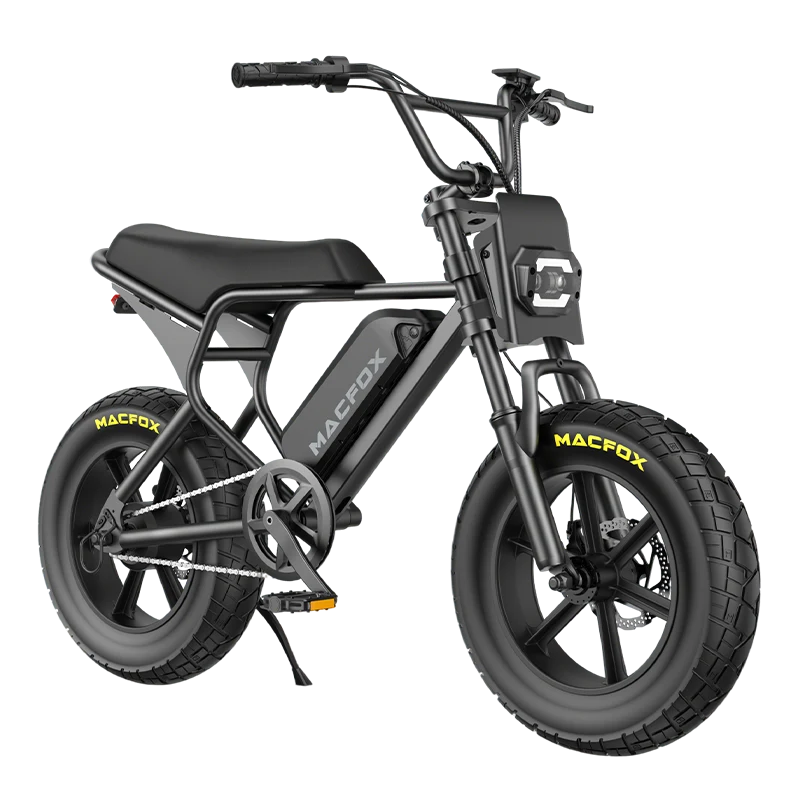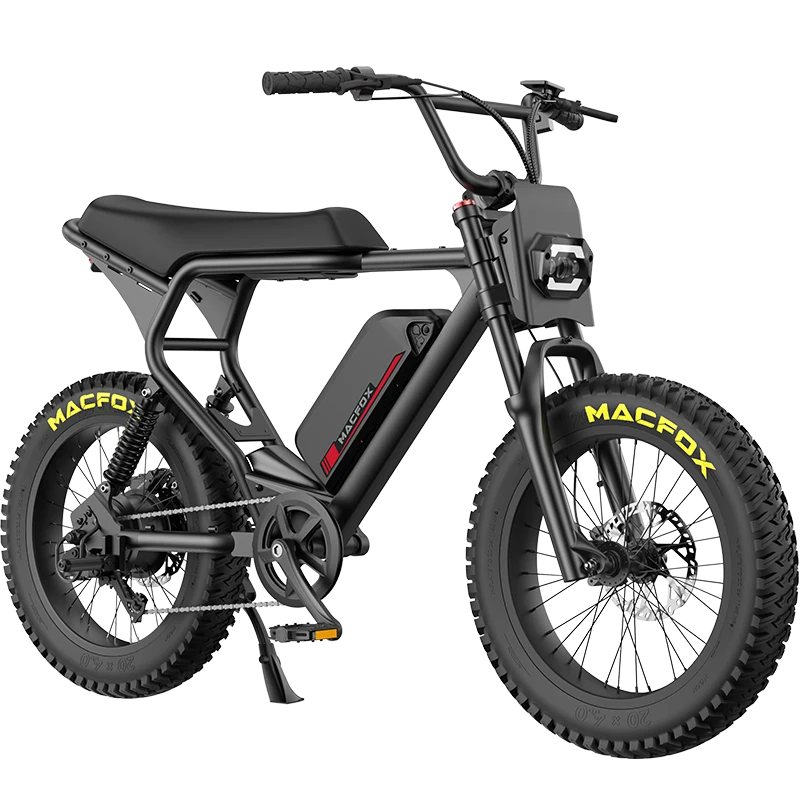Electric bicycles, commonly known as ebikes, have carved a significant niche in the transportation sector, offering a fusion of manual and electric cycling. A critical component driving this electric revolution is the ebike battery. Designed for endurance, efficiency, and reliability, these batteries have transformed urban commutes and recreational rides. This comprehensive guide provides an in-depth look into optimizing the use of ebike batteries, ensuring riders get the most out of every pedal.
Contents []
- 1.Ebike Battery Composition
- 2.The Art of Proper Charging
- 3.Riding and Storage Habits Impact Battery Health
- 4.Maintenance and Cleaning
- 5.Replacements and Recycles
- 6.The Socio-Economic Benefits of Ebike Battery Optimization
- 7.Conclusion
- 8.FAQs
- 9.We recommend for you
Ebike Battery Composition
Diving into the world of ebike batteries requires foundational knowledge about their intricate design and construction. Most electric bikes today are powered by Lithium-ion batteries, recognized globally for their high energy density and commendable cycle life. But what gives them this edge?
Firstly, these batteries are constructed using several layers: a cathode, which is the positive side; an anode, the negative side; an electrolyte that allows ions to move between the cathode and anode; and separators, which keep the two electrodes apart. When the battery discharges, lithium ions move from the anode to the cathode, releasing energy in the process. During charging, these ions move back to the anode.
This lithium-ion movement offers a consistent energy output, ensuring that ebikes have a steady power supply, allowing riders to maintain a consistent speed and torque. Moreover, their chemical composition aids in reducing self-discharge, which means they lose power more slowly when not in use compared to other battery types.
But it's not just the chemical design that sets them apart. The physical design of these batteries, often compact and lightweight, makes them ideal for ebike applications. Manufacturers prioritize this, ensuring batteries don't add significant weight to the bikes, maintaining their agility and ease of use.

The Art of Proper Charging
Ensuring that your ebike battery delivers its best performance mandates mastery in the art of charging. Charging is more than just plugging your bike in; it's about understanding the nuances that ensure battery longevity.
To begin with, a prevalent misconception is that lithium-ion batteries need to be fully discharged before recharging, rooted in the memory effect associated with older battery types. However, this is a myth. In reality, these batteries thrive when they aren't completely depleted. It's advisable to plug them in for a recharge when they hover around the 20% to 30% mark. Consistent deep discharges can lead to a reduced lifespan.
Next, let's talk about the tools of the trade - the chargers. It might seem tempting to use a fast charger or an alternative charger, especially if the original one goes missing or is damaged. However, the charger supplied with your ebike or one recommended by the manufacturer is specifically designed for your battery's requirements. Using incompatible chargers can lead to reduced efficiency, overheating, and in some extreme cases, battery damage.
Ambient temperature is another critical factor often overlooked. Charging your battery in conditions that are too cold or too hot can severely impact its health and efficiency. While it might seem tedious, ensuring that the battery is charged in an environment ranging between 60°F to 75°F can significantly extend its life.
Riding and Storage Habits Impact Battery Health
Beyond charging, how you use and store your ebike can significantly influence battery health. For instance, consistently pushing your ebike to its limits by using maximum pedal assistance can drain the battery faster. On the contrary, using moderate or lower pedal assistance levels can extend the battery's life as it draws less power. Striking a balance between manual pedaling and electric assistance can optimize both your workout and the battery's health.
Storage habits play an equally critical role. Batteries are sensitive to their surroundings. When not in use, they should be stored in cool, dry places, away from direct sunlight or extreme cold. Extreme temperatures can degrade the battery's chemicals, reducing its overall lifespan.
Moreover, while it might seem counterintuitive, regular rides can benefit your battery. Just like humans, batteries need "exercise" too. Keeping the electrons inside them moving by using the ebike frequently ensures they remain in good health. On the other hand, letting a battery sit idle for extended periods can lead to faster degradation, reducing its efficiency when you finally decide to use it.
Related Reading: Utilizing an E-Bike in the Absence of a Battery
Maintenance and Cleaning
The longevity of an ebike battery isn't just a product of its usage or charging habits but also its upkeep. Regular maintenance checks are vital. Connections, which act as bridges between the battery and the bike, can accumulate dirt and grime, especially if you frequently ride in muddy or dusty conditions. Such accumulation can hamper efficient power transmission, leading to reduced performance.
When it comes to cleaning, there's a golden rule – never immerse the battery in water. Instead, using a damp cloth to gently wipe away any dirt or residue is ideal. It's essential to ensure that no moisture seeps into the battery compartments, as this can damage the internal components.
Replacements and Recycles
No matter how meticulously you care for your ebike battery, it has a finite life. Over time, with repeated charge cycles, it will inevitably degrade. Typically, after 500-1000 full charge cycles, an ebike battery might only be able to hold about 80% of its original capacity. This degradation is a natural process and an indication that it might be time for a replacement.
When it comes time to replace, if you are a Macfox ebike rider, be sure to choose a quality battery from Macfox. While it may be tempting to look for cheaper alternatives, quality ensures longevity and safety.
And when it's time to bid goodbye to your old battery, do so responsibly. These batteries contain chemicals that can be harmful to the environment. Most urban centers and municipalities have dedicated recycling centers for electronic waste. Ensure your old battery makes its way there, contributing to a greener planet.
The Socio-Economic Benefits of Ebike Battery Optimization
While the primary focus of optimizing ebike batteries is to enhance the individual rider's experience, there's a broader socio-economic impact worth considering. Efficient battery usage translates to less frequent replacements, reducing the demand for raw materials and the environmental footprint associated with battery production. Additionally, with ebikes becoming a popular alternative to traditional transportation means in urban areas, optimized battery use can lead to fewer vehicles on the road, reducing traffic congestion and lowering carbon emissions. On an economic level, if consumers spend less on battery replacements and maintenance, it can lead to increased disposable income, indirectly boosting local economies. Thus, the ripple effect of proper ebike battery optimization extends far beyond the individual, influencing society at large.

Conclusion
Navigating the world of ebike batteries can seem intricate, but with the right knowledge, optimizing their use becomes second nature. By understanding their composition, mastering the art of charging, maintaining diligent riding and storage habits, and prioritizing regular maintenance, you can ensure that your battery not only lasts longer but also delivers peak performance throughout its life.
FAQs
Q1: How often should I charge my ebike battery?
Ideally, it's best to recharge after every ride, especially if the charge is below 50%. However, avoid immediate charging post a long, strenuous ride. Let the battery cool down first.
Q2: Is it safe to charge my ebike battery overnight?
Most contemporary chargers are designed to halt once the battery is fully charged, preventing overcharging. Nonetheless, it's always a good practice to keep an eye out during the initial charges to monitor for any abnormalities like overheating.
Q3: Can I replace my ebike battery with one that has a higher capacity?
It's possible, but compatibility is key. A higher capacity battery can provide longer rides but might be bulkier. Before making such decisions, always consult with your ebike manufacturer or an expert to ensure compatibility and safety.


















